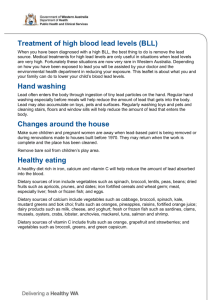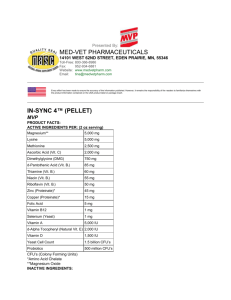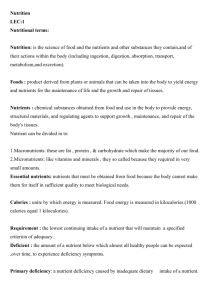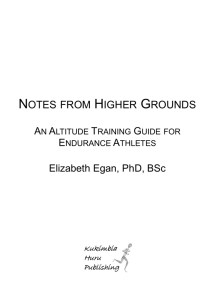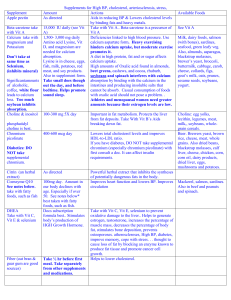Tips for female athletes from the OTC Supplements:
advertisement
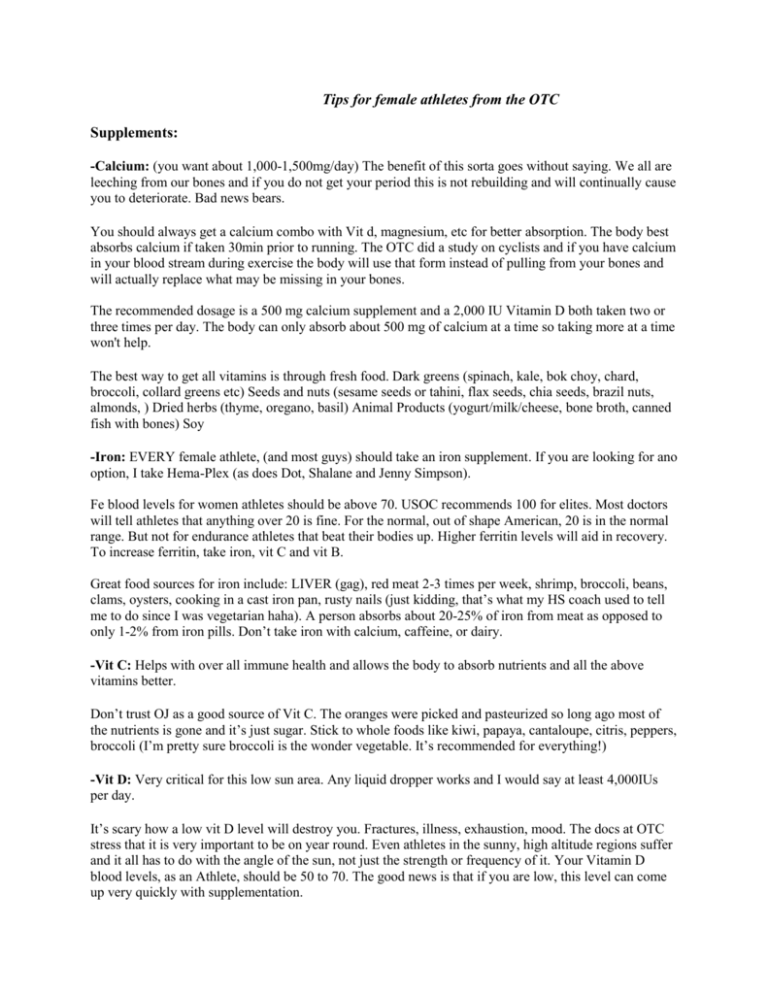
Tips for female athletes from the OTC Supplements: -Calcium: (you want about 1,000-1,500mg/day) The benefit of this sorta goes without saying. We all are leeching from our bones and if you do not get your period this is not rebuilding and will continually cause you to deteriorate. Bad news bears. You should always get a calcium combo with Vit d, magnesium, etc for better absorption. The body best absorbs calcium if taken 30min prior to running. The OTC did a study on cyclists and if you have calcium in your blood stream during exercise the body will use that form instead of pulling from your bones and will actually replace what may be missing in your bones. The recommended dosage is a 500 mg calcium supplement and a 2,000 IU Vitamin D both taken two or three times per day. The body can only absorb about 500 mg of calcium at a time so taking more at a time won't help. The best way to get all vitamins is through fresh food. Dark greens (spinach, kale, bok choy, chard, broccoli, collard greens etc) Seeds and nuts (sesame seeds or tahini, flax seeds, chia seeds, brazil nuts, almonds, ) Dried herbs (thyme, oregano, basil) Animal Products (yogurt/milk/cheese, bone broth, canned fish with bones) Soy -Iron: EVERY female athlete, (and most guys) should take an iron supplement. If you are looking for ano option, I take Hema-Plex (as does Dot, Shalane and Jenny Simpson). Fe blood levels for women athletes should be above 70. USOC recommends 100 for elites. Most doctors will tell athletes that anything over 20 is fine. For the normal, out of shape American, 20 is in the normal range. But not for endurance athletes that beat their bodies up. Higher ferritin levels will aid in recovery. To increase ferritin, take iron, vit C and vit B. Great food sources for iron include: LIVER (gag), red meat 2-3 times per week, shrimp, broccoli, beans, clams, oysters, cooking in a cast iron pan, rusty nails (just kidding, that’s what my HS coach used to tell me to do since I was vegetarian haha). A person absorbs about 20-25% of iron from meat as opposed to only 1-2% from iron pills. Don’t take iron with calcium, caffeine, or dairy. -Vit C: Helps with over all immune health and allows the body to absorb nutrients and all the above vitamins better. Don’t trust OJ as a good source of Vit C. The oranges were picked and pasteurized so long ago most of the nutrients is gone and it’s just sugar. Stick to whole foods like kiwi, papaya, cantaloupe, citris, peppers, broccoli (I’m pretty sure broccoli is the wonder vegetable. It’s recommended for everything!) -Vit D: Very critical for this low sun area. Any liquid dropper works and I would say at least 4,000IUs per day. It’s scary how a low vit D level will destroy you. Fractures, illness, exhaustion, mood. The docs at OTC stress that it is very important to be on year round. Even athletes in the sunny, high altitude regions suffer and it all has to do with the angle of the sun, not just the strength or frequency of it. Your Vitamin D blood levels, as an Athlete, should be 50 to 70. The good news is that if you are low, this level can come up very quickly with supplementation. There are many vitamin companies and this whole thing can get very overwhelming very quickly. Plus, you have to worry about contamination and poor quality that could make you sick or worse, ingest something banned. This being said, do not hesitate to ask and I can share what I two sense I know or I can gain info from other trustworthy people. I have used Kara Goucher, Shalane Flanagan, Deena Kaster, Jenny Simpson, and the OTC as resources of knowledge for this type of thing. Training -AlterG: When recovering from an injury, the alterg is a great resource. Do not begin running on it until you can walk briskly outside with no pain. Start at 60% body weight for 10min and increase one variable at a time (whether it be weight or length). Once you can easily do 4 miles at 80% body weight, you are ready to run outside! As mentioned above, if you are using the alterg as a way to take a bit off the pounding, then training on the alterg should be done at 92% body weight as this is the most efficient percent to take off pounding while not altering your normal foot strike. -Altitude Training: Building blood volume using at least 28 days at elevation greater than 3,000ft (ideally 5,000-8,000) can boost VO2 and over all performance by 1-3%. This could be 5-15seconds for 5k. If training for a race at elevation, there is no way to mimic this without training at that elevation prior to the event. While training at elevation, the HR and lactate threshold are important numbers to be aware of as the body responds to the added stress you can adapt the paces and train appropriately. If racing at altitude OR coming from altitude to sea level, one should plan to compete within 72 hours or outside of 10 days. The body makes adjustments in between that make maximal performance more difficult. Altitude tents are a great way to maintain blood volume after a stint. It replicates the ideal “live high, train low” philosophy. However, research suggests that 10-14hrs a day is most beneficial. That is a substantial amount of the day as well as sleeping at night. Also, personal note here is that it is nearly impossible to sleep with another person while in the tent as they get extremely hot! (Hence, my husband has been kicked to the couch within the first year of our marriage..) -Aqua jogging: 20min post workout will open up the venus blood flow to promote immediate nutrient rich blood flow and increase recovery. -Fueling for performance: Perhaps the most important of all our tasks as athletes is to fuel the fire that allows us to run. Everyone has heard of this, but one of the key things is recovering. And the best way to do this is to provide the nourishment for the body to pull from as it rebuilds and revamps us for the next day. Using the 30-60min window post run to kick start recovery is great, but keep in mind that after a long run the next 4-7hours are critical for reloading with carbs. We always think that carbs are what you have BEFORE a race or big workout, but it is equally as important to have them afterwards. When the glycogen stores are depleted in a long run, the next 72hrs are the repair phase. It is all about the recovery. We get faster and stronger not necessarily by the runs and workouts and strain we put on our body, but rather in it’s ability to recover and rebuild. The quicker and more efficiently our body does this process, the faster and stronger we become. (Plus we stay healthy and can have consistent quality training which is most of the battle!) -Other recovery options: (use based upon personal preference) ice bath, Epsom salt bath, foam roller, chiro, massage, acupuncture, compression wear, leg propping, swim, naps, stretching, yoga etc. -Rehab: Typically you hear that it is 2-3X more than running, however, I have found this to be untrue. 1We are runners. We are not used to intense swimming, biking, elliptical/elliptigo, etc. You will get extremely sore from these activities and working into them is important. Your body is already broken down (which is why you got injured in the first place most likely), so I have found that easing into rehab and cross training is critical. 2-Emotionally it is taxing. Swimming for two hours would be a killer on the psyche. Biking for 3 hours would kill the body and mind. My point is, take your normal training schedule and mimic it on an alternative exercise routine. When you would have a workout, do a session on the bike to imitate. Easy day? Aqua jog for the length of your typical run. Obviously, these are examples and each injury will be different and allow you to implement certain cross training elements. The time of year and seriousness of the injury will determine the intensity of training also. Sometimes the best thing to do is nothing at all. Other times, focusing on weaknesses, core, strength, various Dr. appointments etc is the top priority, Most importantly, keep a positive outlook, learn, grow, and make the most of the situation. -Strength Training: Lifting, pilates, yoga, bare foot running, physical therapy, swimming, core, KRAV (Dot’s new fav), other cross training classes. -Testing: These tests are all great bits of info to have as a baseline and to get repeated to track progress (or regression in the circumstance of injury). VO2 Max, lactate threshold, dexa, gait analysis, PT range of motion, feet for pressure and orthotics if necessary. Those should all be done on about a 6month schedule. Blood work (most importantly TIBC, Ferritin, Vit D, Hematocrit, WBC) should be tested every 3-4 months. (Other tests may be necessary if something abnormal arises).

